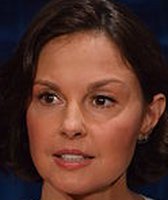Stand up for the facts!
Our only agenda is to publish the truth so you can be an informed participant in democracy.
We need your help.
I would like to contribute
The Republicans have repeated one specific verse in their chorus against President Barack Obama’s expected Supreme Court nomination following the death of Justice Antonin Scalia.
It sounds something like this: There hasn’t been a Supreme Court vacancy filled in an election year in 80 years.
Iowa Sen. Chuck Grassley, the Republican chair of the Judiciary Committee, first said it on Feb. 13. During that night’s GOP primary debate in South Carolina, Florida Sen. Marco Rubio repeated a variation of it. And the following morning, Texas Sen. Ted Cruz said it on Meet the Press.
The Republican lawmakers and presidential candidates have phrased this talking point differently with varying degrees of accuracy on the Truth-O-Meter. Here’s what you need to know about this 80-year "tradition," in Cruz’s words.
What the 80-year figure refers to
Sign up for PolitiFact texts
Sometimes this talking point conflates nomination with confirmation.
The last time there was a vacancy, nomination and confirmation was 84 years ago. After Oliver Wendell Holmes retired on Jan. 12, 1932, Benjamin Cardozo was nominated by President Herbert Hoover on Feb. 15, 1932, and confirmed by the Senate nine days later. (Hoover lost his reelection bid that year.)
But the notion of an 80-year precedent is fundamentally misleading.
"This is entirely a matter of circumstance," said Sarah Binder, a political scientist at George Washington University. "Certainly not a norm or tradition by presidents refraining from nominating in a presidential election year or by senators refusing to consider such nominations."
While it is rare to fill a Supreme Court vacancy while a presidential race is happening, that's more because seats on the bench are seldom empty in election years.
"Justices rarely leave active service in an election year, because they know, at least in the modern era of contentious confirmation battles, that their colleagues will be short staffed because of the unlikelihood of an election-year confirmation of a successor," Russell Wheeler, a judicial expert with the Brookings Institution, told us. "Justices in the modern era rarely die in office."
‘Tradition’ not consistent with judicial history
In the time frame Republicans are suggesting, only three presidents have had the chance to fill a seat on the Supreme Court bench in an election year, and all of them took it.
In 1940, President Franklin D. Roosevelt nominated Frank Murphy, after the death of Pierce Butler in 1939.
In 1956, President Dwight D. Eisenhower made a recess appointment of William Brennan. Brennan was nominated and confirmed after Eisenhower won reelection.
In 1968, President Lyndon B. Johnson — who announced he would not run for reelection — made two unsuccessful nominations. He picked sitting Justice Abe Fortas to replace retiring Chief Justice Earl Warren, and Homer Thornberry to replace Fortas.
Facing strong opposition from Congress, Fortas asked his name to be withdrawn and Thornberry followed suit. Warren delayed his retirement.
And there’s also 1988, when Justice Anthony Kennedy was confirmed by a vote of 97-0. President Ronald Reagan, in his last term, nominated Kennedy in 1987.
Here’s a breakdown of how all the Supreme Court vacancies in election years have played out since 1932.
Election year
Recess appointment
Nominated
Confirmed
Outgoing president
1932
✓
✓
1940
✓
✓
1956
✓
1968
✓
✓
1988
✓
✓
Even in 1968 — the clearest parallel to 2016’s Supreme Court scuffle — the Senate held confirmation hearings for Fortas. Should Republican lawmakers refuse to begin the process of confirming an Obama nomination, it would be the first time in modern history.
For more Supreme Court coverage, check-out our recent fact-checks on quantifying Scalia's humor, Donald Trump's Supreme Court pick and Chris Christie's support for Sotomayor.
UPDATE: This story has been updated to clarify that 1932 was the last year there was an election-year vacancy, confirmation and nomination in an election year.
Our Sources
See individual fact-checks for sources.










































